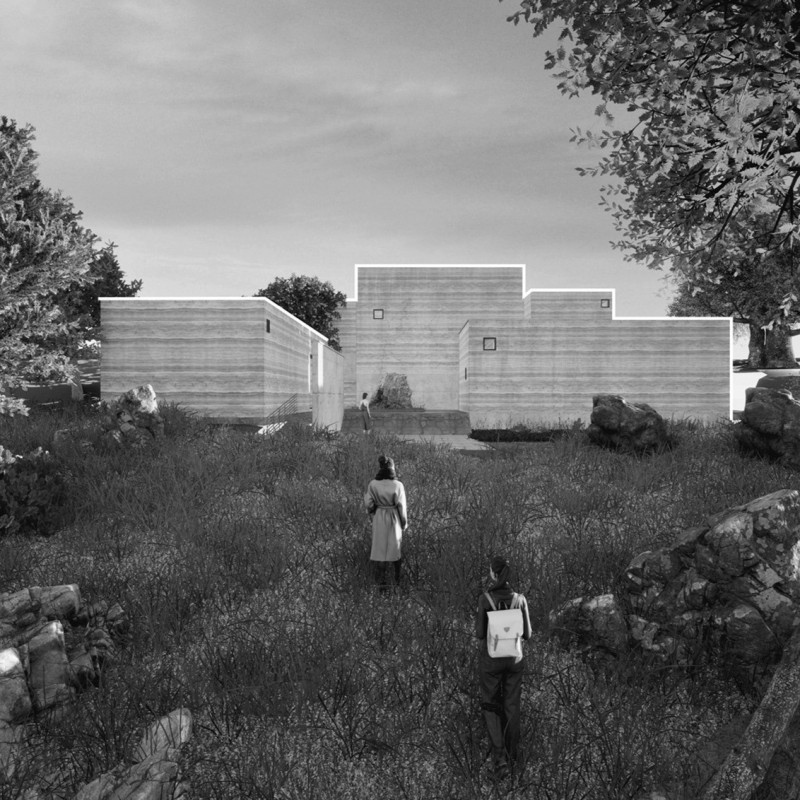5 key facts about this project
The design features a series of interconnected spaces that foster collaboration among community members. There are several zones within the project, including multipurpose spaces for gatherings, areas for workshops, and dedicated quiet zones for individual contemplation. This arrangement encourages a dynamic relationship between users and the environment, promoting both communal engagement and personal tranquility.
Innovative design strategies characterize this project, which sets it apart from conventional architectural approaches. One notable aspect is the use of rammed earth as a primary construction material, providing durability while harmonizing with the natural landscape. This choice reflects a commitment to sustainability and environmental stewardship. Additionally, strategic orientations of windows and openings allow for optimal daylighting and ventilation, enhancing the interior atmosphere.
The architectural design employs concrete for structural elements, ensuring stability while enabling flexibility in space usage. Glass facades connect the interior to the exterior, encouraging a seamless transition between the two and reinforcing the concept of openness. The integration of wood details adds warmth and creates a comfortable scale within the built environment.
The project's layout is thoughtfully arranged around existing topographical features, minimizing disruption to the land while utilizing natural contours for positioning the buildings. This design acknowledges and respects the ecological context, promoting awareness of the surrounding environment among users.
The unique combination of sustainable materials, thoughtful spatial arrangement, and community-centered philosophy distinctly positions *Between Nests of Earth* in contemporary architectural discourse. The project illustrates how architecture can serve not only as a physical space but as a catalyst for social interaction and environmental consciousness.
For further exploration of this project, including architectural plans, architectural sections, and in-depth architectural designs, readers are encouraged to examine the project's presentation in detail. Understanding the architectural ideas behind *Between Nests of Earth* reveals insights into its successful integration of community and sustainability.


























